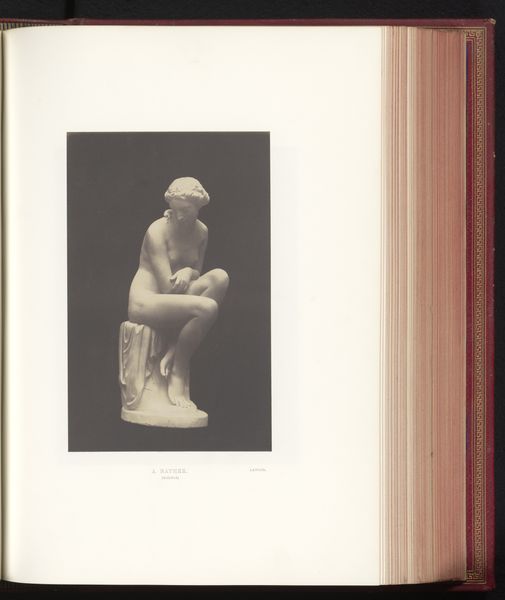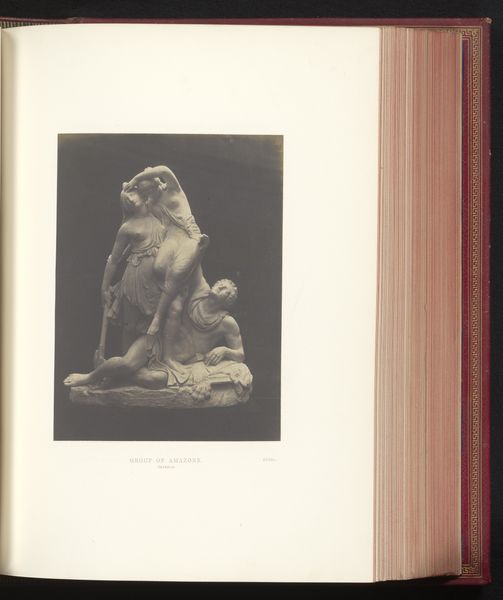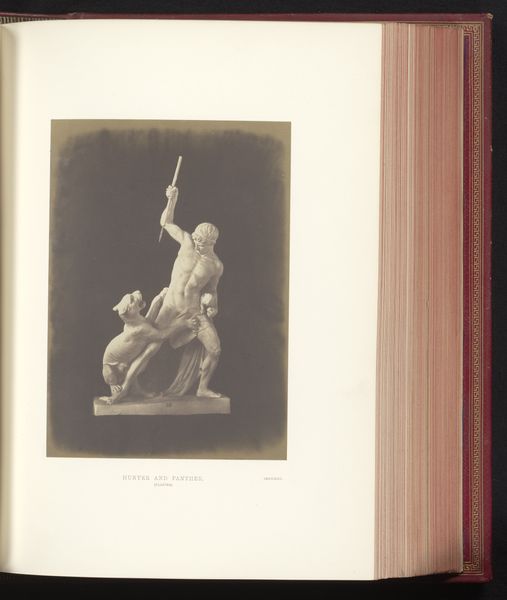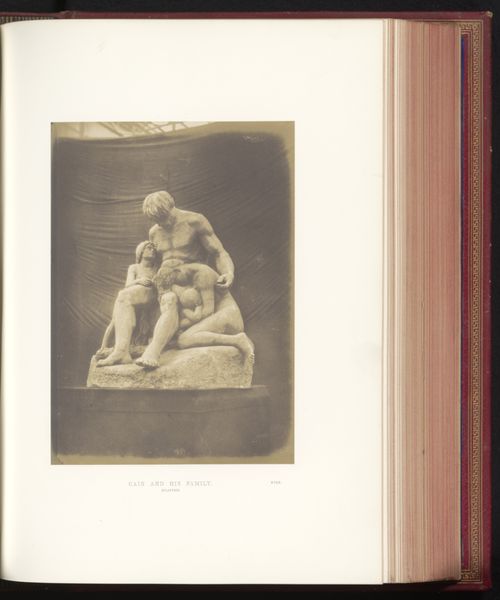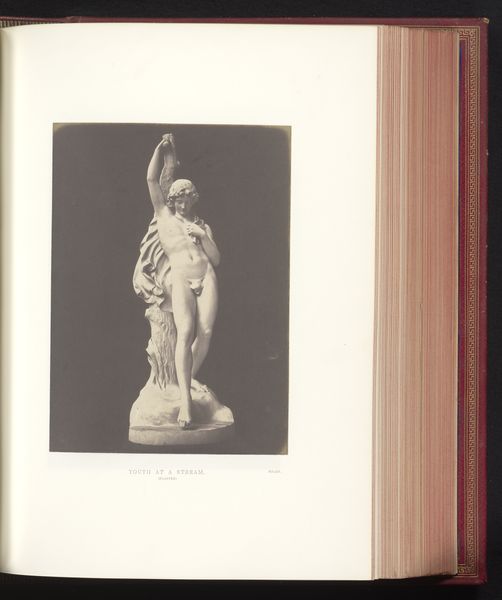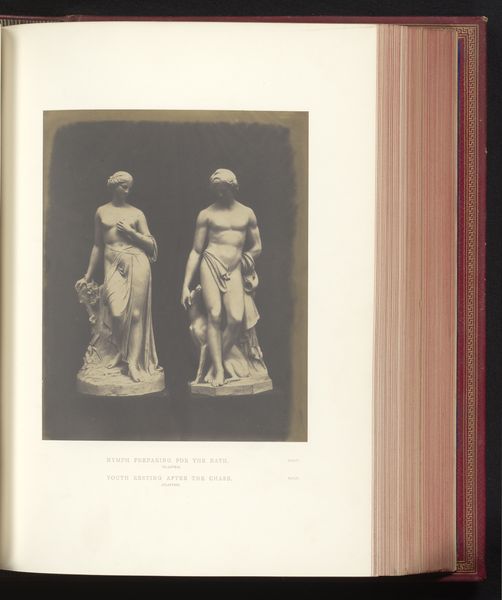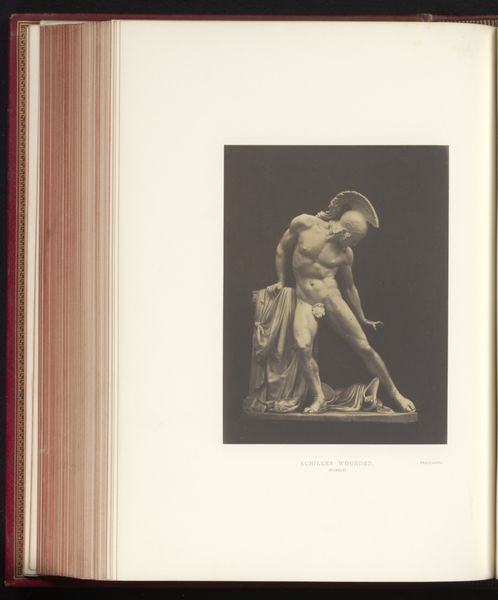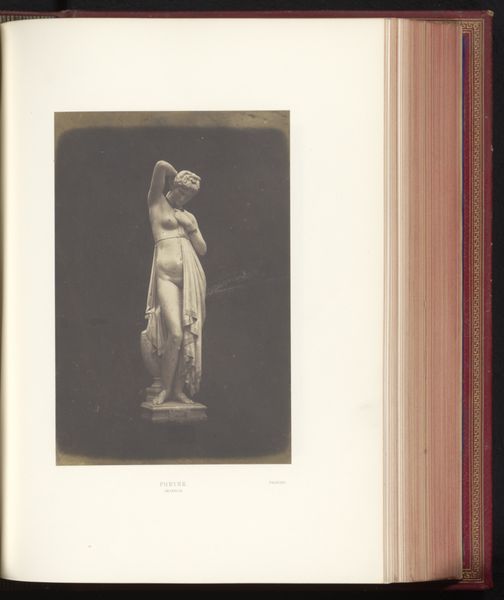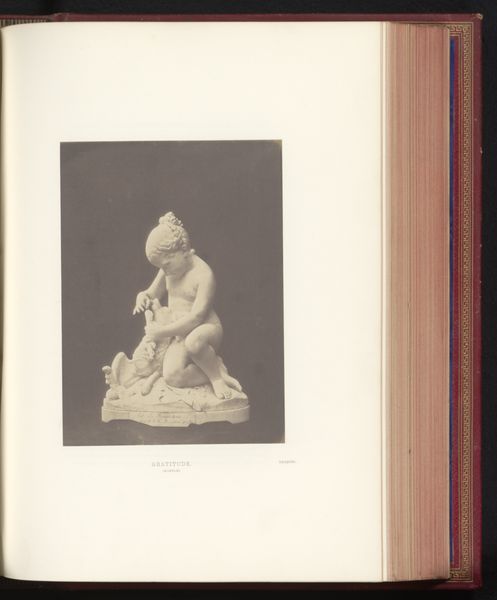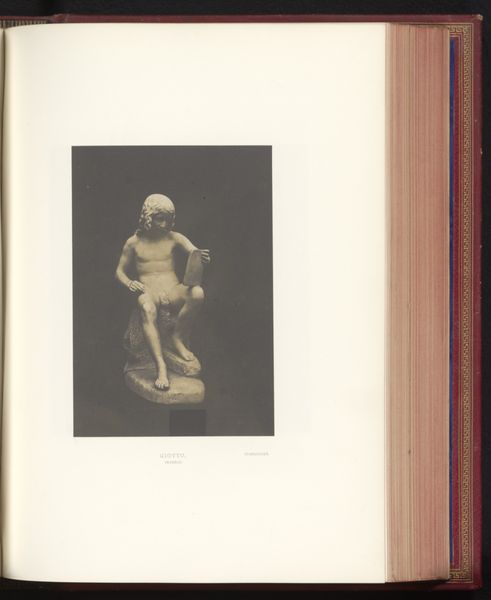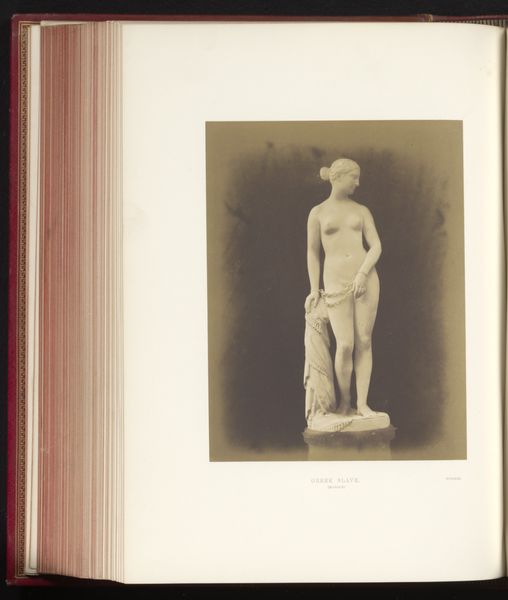
Sculptuur van een jongen en een vlinder door Frederick Thrupp, tentoongesteld op de Great Exhibition of the Works of Industry of All Nations van 1851 in Londen 1851
0:00
0:00
photography, sculpture, marble
#
neoclacissism
#
photography
#
sculpture
#
academic-art
#
marble
#
nude
Dimensions: height 191 mm, width 141 mm
Copyright: Rijks Museum: Open Domain
Editor: This is a photograph of Frederick Thrupp’s marble sculpture, "Sculpture of a Boy and a Butterfly," which was exhibited at the Great Exhibition in London in 1851. The mood is one of quiet observation, of almost breathless anticipation, and the smooth coolness of the marble contrasts starkly with that charged stillness. What do you see in this piece, and perhaps what did viewers see in it then? Curator: The Great Exhibition was, after all, about celebrating industrial progress – but here's Thrupp offering up a vision of innocence, a kind of pre-industrial pastoral moment rendered in exquisite Neoclassical style. It's funny, isn’t it, how artists often respond to progress by looking backward? It's got all the academic art hallmarks: idealised nude form, meticulous detail… Do you think it presents an allegory for the industrial age perhaps? With the fleeting butterfly symbolising something fragile threatened by progress? Editor: That's a really interesting take! I was initially drawn to the boy's focused expression, a kind of childlike wonder, so that industrial reading hadn't occurred to me. Maybe he symbolises the endless opportunities in a changing world. Curator: Hmm, interesting! Perhaps it’s both. I suppose that is the enduring power of great art isn't it? Multiple layers of meaning, a chance for dialogue across generations. Editor: Absolutely. It's fascinating how context shapes our interpretation. This dialogue gives me so much to think about when it comes to my interpretation. Curator: Same here. Let’s leave people to ponder their take on the work and reflect.
Comments
No comments
Be the first to comment and join the conversation on the ultimate creative platform.
